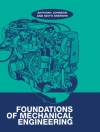Musculoskeletal disorders are among the most significant health risks contributing to the global decline in mental health and physical performance. Occupations with high physical work demands, such as patient handling in nursing, are associated with high rates of long-term absenteeism and disability due to musculoskeletal pain and disorders. Robotic assistance systems are revolutionizing bedside care and could provide a healthy future for caregivers. For the first time, the potential of a collaborative robotic system to assist nurses in a manual patient handling scenario has been quantified. Using the system significantly reduced the maximum effort required, resulting in physical relief. It demonstrates the feasibility of robot-assisted patient repositioning and highlights the need for interdisciplinary research to adaptively respond to the individual needs and functional abilities of nurses. This work provides a foundation for future research and practical implementation. The use of robotics is innovative, contemporary, widely applicable, and promising for reducing existing risk factors in nursing care.
Tabella dei contenuti
General Introduction.- Aim and Outline.- Review of Publications.- General Discussion.- Limitations and Future Directions.- Conclusion and Implication.
Circa l’autore
Anna Brinkmann studied Medical Technology (B.Sc.) and Human Technology in Sports and Medicine (M.Sc.) in Bremerhaven, Cologne and Istanbul. She received her Ph.D. (Dr. rer. nat.) from the Carl von Ossietzky University of Oldenburg, Department of Assistance Systems and Medical Device Technology.












